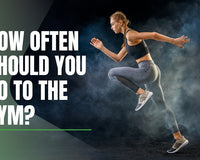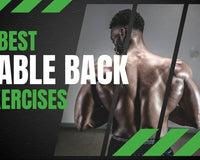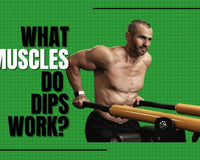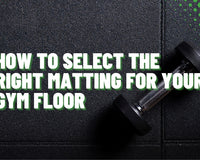Looking to focus on your glutes but tired of doing squats? Look no further than the leg press machine. It's not just a quad machine because if used properly, it can target and develop your glutes like a pro as well.
Let’s discuss everything you need to know, from adjusting foot placements to form tweaks, all designed to help you sculpt a stronger, rounder booty. Let’s get to it and find out how to target glutes on the leg press.
What Is the Leg Press Machine?

Before we talk about how to maximise glute activation with the leg press, let's first go over what the leg press machine actually is.
Think of it as a fixed-position squat machine because you're still working those lower body muscles but in a more controlled environment.
Unlike free-weight squats, which require you to stabilise the weight yourself, the leg press machine isolates those muscles and allows you to lift heavier loads without worrying about balance.
It’s a great way to target your quads, hamstrings, calves, and, of course, your glutes.
Now that you know what the leg press machine is, let’s break down the three main types you’ll find in most gyms and how each one works.
The angle of the sled and the position of your body play a huge role in what muscles get activated, and you can adjust each type to focus on specific muscle groups, including those glutes.
Related Post: Leg Press Vs Squat - Key Differences
45-Degree Leg Press
The 45-degree leg press is often the classic version you'll find in most gyms. It’s simple, effective, and very versatile.
As the name suggests, the sled or platform is positioned at a 45-degree angle, and you recline in the seat, pushing the weighted platform upward with your legs. You can adjust the seat’s incline to make the exercise easier or more challenging depending on your fitness level.
This variation hits a variety of muscles depending on your foot placement. When your feet are placed higher up on the platform, it shifts more of the load onto your glutes and hamstrings. If you keep your feet lower, you’ll target your quads more directly.
The 45-degree angle is the perfect sweet spot for deep hip flexion and extension, both of which are essential for maximizing glute engagement.
The sled’s angle allows for a fuller range of motion, so you can extend your hips and get your glutes working harder without worrying about balancing the weight, as you would with free weights.

Horizontal Leg Press
The horizontal leg press is slightly different in terms of positioning. Here, the platform is parallel to the ground, and the seat is upright, so your legs push the platform away from your body. The platform itself moves away from you as you push.
Just like the 45-degree leg press, the horizontal machine allows you to adjust your foot placement to focus on different muscles. A wide stance will help target your glutes more effectively, while a narrower stance brings more focus to your quads.
Vertical Leg Press
The vertical leg press is the heavy-duty version of the leg press machine, and it’s a favourite for those who want to push serious weight. Here’s where you lie on your back, with the platform above you. As you push the platform up, you're literally lifting it towards the ceiling.
Because of the vertical angle, this version typically targets your quads more than the glutes. However, by adjusting your foot placement and using a wider stance, you can shift the focus more to your glutes and hamstrings.
As we’ve said a few times now, the way you position your legs really matters when targeting your glutes on the leg press, so let’s find out how to position your legs for the most activation and the biggest buns of steel.
Related Post: How Much Does a Leg Press Weigh?
The Glute Muscles and Their Importance

The gluteal muscles, or glutes, are the largest muscles in the body, playing an important part in nearly every lower body movement. The glutes are made up of three main muscles, including the following:
Gluteus Maximus
This is the largest muscle and responsible for powerful movements like hip extension and well as outward rotation of the hip. It's important for activities like running, squatting, and climbing, providing strength and stability.
Gluteus Medius
Located on the outer pelvis, this muscle stabilizes the pelvis and helps with hip abduction, or moving the leg away from the body’s midline. It’s used for balance and proper leg alignment during movement.
Gluteus Minimus
The smallest of the three, the gluteus minimus assists in hip abduction and external rotation, helping to stabilize the pelvis and prevent injuries by keeping the hips aligned during activities like walking or running.
Overall, strong glutes are essential for lower body strength, mobility, and injury prevention. They play a key role in posture, athletic performance, and everyday movements.
Strengthening these muscles not only improves physical performance but also reduces the risk of injury, making glute training a key component of any fitness routine.
Related Post: See All The Muscles Worked by Leg Press
Foot Placement Variations for Targeting Glutes on the Leg Press
No matter which leg press machine you use, foot placement is key to maximising glute activation. Changing where you place your feet, how wide your stance is, and how high up the platform they go will drastically shift which muscle groups are targeted.
Let’s look at some of the best ways to adjust your foot positioning to get those glutes firing.
High Foot Placement for Glutes

By positioning your feet higher up on the platform, you increase hip flexion, which means more range of motion for the glutes. This shift helps reduce knee extension, which takes focus off your quads and puts more emphasis on your glutes and hamstrings.
Place your feet about two-thirds up the platform and make sure your toes are pointing forward or slightly outward. This setup allows you to get a deeper stretch in the glutes, helping them activate fully during the movement.
Wide Stance for Glutes
 `
`A wide stance is essential when it comes to targeting your glutes. It promotes hip abduction (moving your legs away from the center of your body), which is a key movement for activating the glutes.
Place your feet wider than shoulder-width apart on the platform, and point your toes slightly outward. A wider stance allows you to engage the outer glutes, specifically the gluteus medius. This move is excellent for creating a fuller, rounder glute shape.
Aside from these main methods of targeting your glutes, there are also some other tips you can follow to maximize glute activation when leg pressing.
Perfecting Your Leg Press Form for Gluteal Activation
If you want to make sure you’re squeezing every bit of glute goodness from your leg press workout, form matters. Don’t just go through the motions. Rather, maximize each rep and engage those glutes.
Here are a few tips to help you get the best form and feel the burn.

Perform Deep Reps
The deeper you go into the movement, the more you engage your glutes. Increasing hip flexion by lowering yourself further allows for a greater stretch, which means more glute activation.
Full-range reps help target the glutes more effectively, giving them a deeper stretch at the bottom and a better contraction at the top.
Lower yourself as far as your knees will comfortably allow without compromising your form. The deeper you go, the more your glutes will stretch and contract.
Pause at the Bottom
Another great trick for maximising glute activation is to pause at the bottom of each rep. This removes momentum and forces your glutes to work extra hard to press the weight back up.
Pausing eliminates any bounce or momentum and forces your glutes to work against the load. This will help you get more out of every rep.
When you reach the bottom of the movement, hold the position for 1-2 seconds before pushing the weight back up.

Point Your Toes Outward
To target the glutes even more, point your toes outward. This encourages hip external rotation, which is one of the key functions of the glutes. Pointing your toes outward helps engage the gluteus medius (the outer part of the glutes), which contributes to a fuller, rounder look.
Angle your toes outward at about a 45-degree angle. Keep them in that position throughout the movement.
Advanced Techniques for Glute Activation
Ready to take things up a notch and grow those glutes? These advanced techniques will really fire up those gluteal muscles.
Use Resistance Bands

Adding resistance bands to your leg press routine can skyrocket glute activation. By wrapping a band around your knees, you’ll force your glutes to push against the band as you press.
The band adds external resistance that forces your glutes to work harder during the hip abduction phase, helping to develop the outer glutes. Just wrap a glute loop resistance band around your knees and perform the leg press as normal.
Single-Leg Press

To target each glute independently, try doing a single-leg leg press. This variation forces each glute to do all the work, so you can isolate and strengthen them more effectively.
Single-leg presses put more emphasis on each glute individually, giving you a deeper range of motion and allowing you to focus on isolated glute activation.
Use the leg press machine as usual, but perform the exercise with one leg at a time. This will also help address any muscle imbalances between legs.
Related Post: Guide to Leg Machines at the Gym
Progressive Overload is the Key to Glute Growth
If you want to see continuous growth and strength in your glutes, progressive overload is a must. You have to challenge your muscles more over time to stimulate growth.
Progressive overload ensures that your glutes are constantly being challenged, which is essential for muscle growth and development.
Gradually increase the weight or reps over time. For example, start with lighter weights and higher reps, then increase the weight as you become stronger.
Final Thoughts on Targeting Glutes with the Leg Press
The bottom line is that by pointing your toes out, widening your stance, and going as deep as you can, activating those glutes to the maximum is easy with the leg press machine. This is how you grow those buns of steel!





